CARVE HER NAME WITH PRIDE
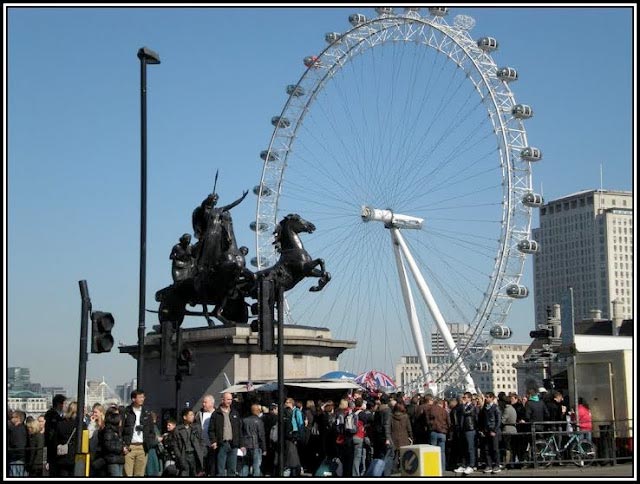
Boadicea …. a souvenir kiosk at her base, a fast food stall to her right and ignored by those about her
-oOo-
BOADICEA – THE WARRIOR QUEEN
(also known as BOUDICA, BOUDICCA & BUDDUG)
Whenever I visit London, I always go and look at the memorial to Boadicea on the Embankment. I love this memorial to the great Warrior Queen and have walked passed it too many times to count. I have taken many people to see it since I consider it to be one of the most important sites of the City. In recent years, I have noticed that each time I visit London, the memorial appears to interest visitors less and less and has slipped into the background like so many statues to past kings, statesmen and other once-prominent dignitaries. Today there is a souvenir stall in front of the plinth, which obscures viewing, and a fast food stall adjacent to it that causes the air around the memorial to be filled with the odour of heated fat. But these are not the only insults that one of the greatest Britons to ever live is now forced to endure. Recently the area became a focal point for tourists wanting to have their pictures taken with The London Eye on the South Bank. Unfortunately The London Eye has totally eclipsed the memorial resulting in Boadicea slipping more and more into the background and now being completely ignored.
During last visit to London, I once again walked across Westminster Bridge just as I have many times before and made way to the memorial. Although it was late on a Sunday evening, the area was still filled with tourists each jostling the other to get their picture with the London Eye. I moved into their midst and stood before the memorial and looked up at Boadicea. She looked as she always did, standing proudly in her chariot and ready to go off into battle with her daughters at her side. There stood The Mighty Warrior Queen, once the symbol of British resilience, and now all but forgotten by her own people.
I looked at the visitors around me. They were all from elsewhere and each spoke in a different tongue. It was obvious that they were thrilled to have seen Big Ben and the Houses of Parliament and were now excited by the site of TheLondon Eye. Not wanting to be a spoil sport, I agreed to take pictures for some of the people when they asked and even agreed to be in a few of their photographs. However, I found it disconcerting that no one seemed to notice the memorial.
However into the midst of clicking cameras and flashing light came a group of Italians. They were a jolly group, laughing and joking as they made their way across the street. They quickly joined the throng and began snapping photographs of themselves with The Eye. They were obviously enjoying themselves and laughed heartily as they took turns to take a picture of their friends. Once done, the photographer quickly rejoined the group to pose for additional pictures taken by another member. I was enjoying watching the group have fun and it struck me that it would nice if they had one picture where they all appeared together. I offered to take a group picture for them. They were delighted and a small camera was thrust into hand and I was given a quick lesson on which button to push. They all lined up and I took the photograph while they were all laughing. Immediately they all crowded around to look at the picture. They were evidently delighted with the result and found myself being literally dragged into the middle of the group to be part of another series of photographs.
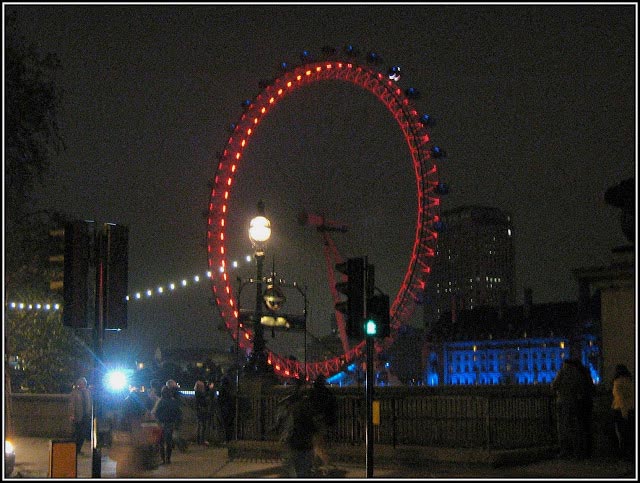 Tourists enjoying having their photographs taken with The London Eye –
Tourists enjoying having their photographs taken with The London Eye –
Boadicea is to the right of the picture
This would have been a delightful ending to my evening, but it was to get better. A member of the group who evidently spoke the most English came forward and asked if I knew anything about the statue behind us. I was overjoyed that someone had noticed Boadicea. They listened attentively while I told them about her, her daughters and her deeds. This took a few minutes since my words had to be translated for the benefit of those in the group that did not speak English. Meanwhile, the number of listeners grew and before I finished there was a huge group around me who had listened and heard of the mighty deeds of The Warrior Queen who had risen up and rebelled against the Romans and who had later died in battle and went on to take her place in legend and myth.
At the end of my discourse, I received a round of applause and some of the audience took pictures of Boadicea and me. After thanking me for telling them about the memorial, the merry band of Italians ran across the road, just having a bus miss them, and disappeared off into the night to take pictures of Big Ben.
——oooOOOooo——
I was very young when I first saw the statue of Queen Boadicea on the Embankment. Being young and impressionable, I was totally bowled over by it. Who would not be? Here, towering above me was a woman with her head held high, standing in a chariot with fierce looking knives coming out of the wheels and about to go into battle and give chase to those Romans who dared to insult her, her daughters and her tribe. Now here she stood with determination on her face to take back her land and revenge her humiliation. This was inspirational stuff – the stuff that any kid would immediately identify with and be ready to join her in battle.
Unfortunately the name Boadicea has dreadful connotations and is decidedly out-of-fashion and no parent would consider saddling their daughter with such a name today. To most people, the name conjures up images of a huge Wagnerian creature complete with long platted fair hair poking out from a brass helmet, with or without horns, and with a breastplate over a long white flowing robe and carrying a spire while screeching out a loud, ear-piercing war cry. The name is now commonly used to insult female politicians and any woman of determination that appears threatening to her colleagues. Although its use is intended to insult, if one thinks about its implication, being likened to the real or even the mythical Boadicea, should be considered a complement. Boadicea rose up as a result of insult and injustice, not only against herself and her daughters, but also towards her people.
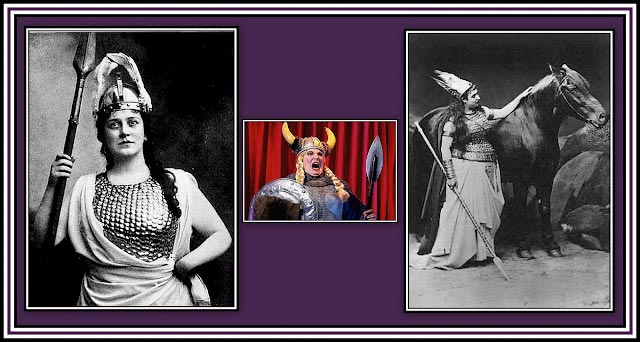 The Valkyrie in Wagner’s Der Ring des Nibelungen (The Ring of the Nibelung) – creatures capable of sending shivers down the spine!
The Valkyrie in Wagner’s Der Ring des Nibelungen (The Ring of the Nibelung) – creatures capable of sending shivers down the spine!
Boadicea, according to the Roman historians Tacitus (56 AD – AD 117) and Dio (150 AD – 235 AD), was of royal descent and Dio wrote that she was possessed of greater intelligence than often belongs to women. She was also credited with being tall and with hair that was reddish-brown or tawny and which hung below her waist. She was also said to have a harsh voice and a piercing glare, and habitually wore a large golden necklace over a many-coloured tunic and a thick cloak fastened by a brooch. I am not surprised that she was said to have a piercing glare. I have never met a determined woman that did not have such a glare. Women have to use every attribute at their disposal, especially in days-gone-by, so as not to be downtrodden and abused.
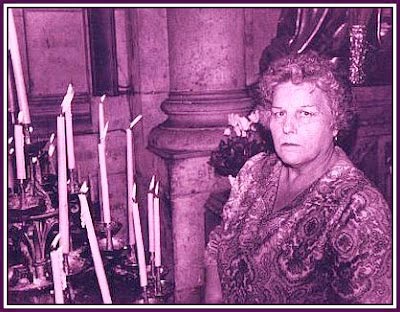 The Look, as modelled by my Mother
The Look, as modelled by my Mother
When I was young my own view of Boadicea was naturally different from the more official one. I imagined her to be a determined and forceful woman – a woman of great intelligence who ruled with an iron hand, but with a hand that was none-the-less tempered with mercy. I saw her as someone who stood up for her beliefs and who would rather die than compromise. I don’t believe that I thought of her necessarily as a great beauty, but I believed her to have been striking, with long red hair cascading down beyond her shoulders. Her eyes, I saw as large and clear and with an ability to bore deep into your soul. Her lips had to be full and tempting. I obviously thought of her as a temptress with an allure that was irresistible. I once heard that Cleopatra used her wiles to achieve her aims. I liked to think that Boadicea was made in a similar mold. I definitely saw Boadicea as a woman above everyday morals – after all, she was a leader – a Warrior Queen – and was, without doubt, She who must be obeyed!
I have to laugh now when I think of my image of Boadicea. I fear that I imagined her as someone like a cross between Marilyn Monroe and Xena, the Warrior Queen.
But what is actually known about the real Boadicea, Queen of the Iceni Tribe? Very little that is based in fact. Even her name is subject to debate. According to many historians, her name was Boudica or Boudicca. However others have called her Voadicia, Bunduca, Buddug or Boadicea. By the nineteenth century, Boadicea became the usual way of spelling her name. It is thought that the name resulted from a miss-transcription of Boudicca when a manuscript of the historian Tacitus was being copied in the middle ages.
The Iceni was a tribe that once occupied Norfolk and north-west Suffolk and were bordered on the west by the Cortitani and fenland and on the south by the Atrebates. Initially, the tribal lands and people were not part of the Roman Empire, but voluntarily joined following the conquests of the Emperor Claudius in 43 A.D. The Iceni were fiercely independent and revolted against the governor when threats were made to disarm them in 47 A.D. At this time, inter-tribal struggles were renewed and which blossomed into a full-scale revolt against Rome. Once the Roman legions crushed the revolt, the king, Prasutagus, was granted client king status. A client king was a term used to describe a leader of a state where the economic, political and/or military affairs of the state became subordinate to a more powerful one, namely Rome.
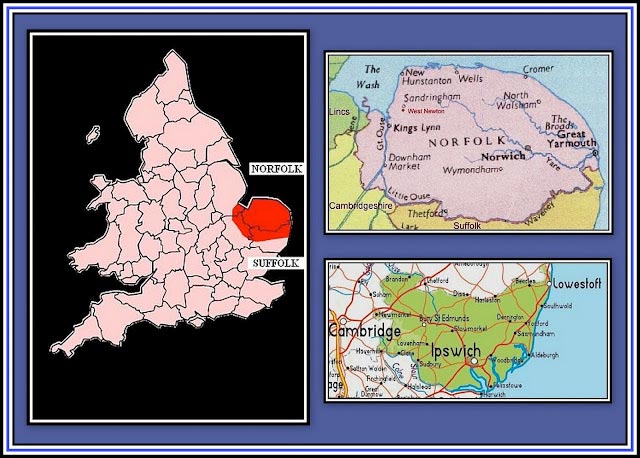 Norfolk & Suffolk – Lands of the Iceni
Norfolk & Suffolk – Lands of the Iceni
Prasutagus lived a long life and enjoyed much wealth. In an attempt to maintain his dynasty, he made the Emperor together with his wife and daughters joint heir to the Iceni lands. Rome allowed allied kingdoms independence for the lifetime of their client kings just as long as they left their kingdoms to Rome in their wills. Once a client king died, his kingdom became incorporated into the Empire. In addition, Roman law did not allow inheritance to pass through a woman. When Prasutagus died in 60 A.D., the Iceni kingdom became part of the Roman Empire and the people were treated as if they had been conquered. Lands and property were taken by Rome and the people were treated as slaves. According to Tacitus, when Boadicea complained, she was flogged and her daughters raped. At the same time, payment of the debts incurred by Prasutagus by borrowing Roman money was demanded and repayment became liable by the Iceni. Boadicea rebelled against Rome and with the Trinovantes, a neighbouring tribe, the town of Camulodunum (near Colchester) was destroyed including a temple to the Emperor Claudius. She and her followers went on to successfully plunder Verulamium (St. Albans) and Londinium (London).
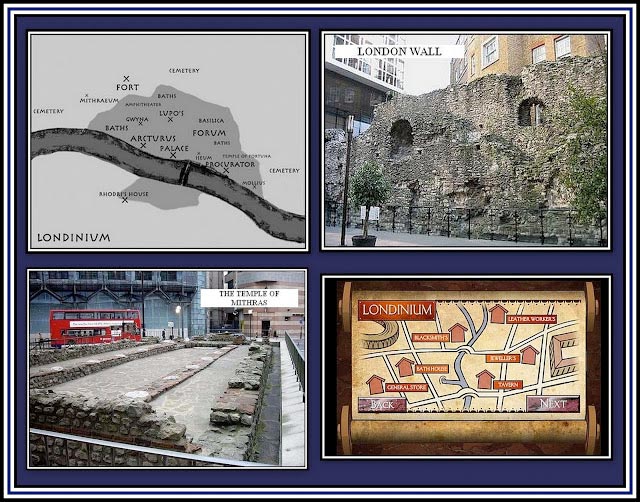 Londinium: Upper right – remains of the city wall; Lower left – The Temple of Mithras
Londinium: Upper right – remains of the city wall; Lower left – The Temple of Mithras
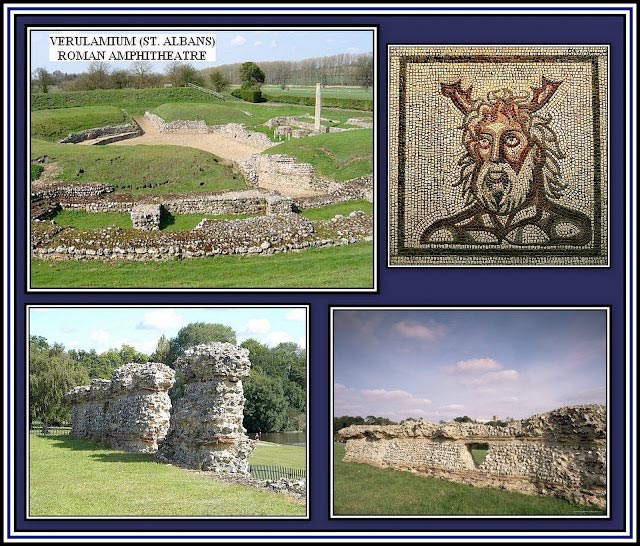 Verulamium (St. Albans): Upper left, amphitheatre; Upper right, mosaic
Verulamium (St. Albans): Upper left, amphitheatre; Upper right, mosaic
Lower: remains of Roman walls
According to Tacitus and Dio, between seventy and eighty thousand people were killed during these battles. Apparently, the Iceni had no interest in taking prisoners and were brutal in their treatment of their enemies. Dio gives a graphic account of the torture methods used by the Iceni and their allies.
When news of the rebellion reached the Governor, Suetonius Paullinus, who at the time was away on the Island of Mona (Anglesey) fighting rebels and druids, left for Londinium. Although founded only in 43 A.D., Londinium had grown quickly into a busy commercial centre and to many traders. Suetonius Paullinus’ journey took him through hostile territory along Watling Street. Watling Street was an ancient trackway between Canterbury and St. Albans. Later the Romans paved and lengthened the street and today, the route is forms the A 2 London to Dover and A 5 London to Wroxeter (in Shropshire) Roads. Once he arrived at Londinium, Suetonius Paullinus realised that he was outnumbered by Boadicea’s forces and decided to abandon the town to the Iceni, much to the chagrin of the populace, choosing to regroup and to engage them at a more suitable .
Verulamium (St. Albans): Upper left, amphitheatre; Upper right, mosaic
Lower: remains of Roman walls
While Boadicea and her forces were destroying Verulamium, Suetonius Paullinus managed to mass together roughly ten thousand men and made a stand in a defile (a gorge between mountains and hills) with a wood behind him at some point along Watling Street in the West Midlands probably close to High Cross in Leicestershire. By the time the two opposing forces met, it is believed that Boadicea commanded over two hundred thousand followers. Although markedly outnumbered, the Roman forces had the advantage of having better equipment at their disposal and being more disciplined. Also of advantage to Suetonius Paullinus and his troops was the location chosen for the battle. The battle field was narrow, which meant that Boadicea could not bring more troops into play at any one time than the Romans.
According to Tacitus, Boadicea addressed her troops before battle. Apparently she told them that she was an ordinary person who wished to avenge her lost freedom, her battered body and the abused chastity of her daughters. She is also said to have declared that their cause was just and that the gods were on their side. Finally, she said that she, a woman, was resolved to win or die and concluded by telling her followers that if they wished to live in slavery, this was to be their choice. Strong words and just the kind of stuff that was guaranteed to carry her into immortality!
Tacitus says that some eighty thousand Britons were killed compared with only eight hundred Romans. However, no matter how many died, Boadicea lost the battle and the Iceni and their allies that survived were returned to a life under the yoke of Rome. It is unsure how Boadicea died. One report says that she poisoned herself upon defeat while another says that she died of her wounds and was given a lavish burial. Regardless of what these accounts say, I like to think that Boadicea stood tall in her chariot with her two daughters at her side and rode up and down the Roman ranks mowing those that had dared to treat her and her children so poorly until a spire flung in the air reached her heart. I also like to think that, as she died, she maintained hold of the reigns of her horses and continued to have her revenge against tyranny and brutality!
The area of King’s Cross in London has often been associated with Boadicea and the Iceni tribe. King’s Cross was once known as Battle Bridge, which came from the name of the bridge crossing the River Fleet here. The name led to the belief that this was the site of a major battle between the Iceni and the Romans. However, this belief has no historical evidence and has been rejected. In addition, it was once claimed that Boadicea was buried between platforms 9 and 10 at the station and she is said to haunt the passages beneath the station. Perhaps it was also believed that she died here during the rush to catch the last train home on a Friday night!

Could it be that Boadicea is buried beneath a platform at Kings Cross Station?
I was amazed to learn that the deeds of Boadicea were all but forgotten by the Middle Ages. However, with the rediscovery of Tacitus’ writings during the Renaissance, Polydore Vergil (or Virgil) (c. 1470 –1555), the Italian historian chosen by Henry VIII to write his and his father’s history, reintroduced Voadicea, as he called Boadicea, back into British history. Her deeds were also recorded in Raphael Holinshed’s Chronicles in 1577, which was to inspire the play, Bonduca, written by Francis Beaumont and John Fletcher, contemporaries of Shakespeare, in 1610. However, it was not until Victorian times that Boadicea deeds joined the ranks of legend. Since a woman reined over Britain at this time, this is perhaps not too surprising and Queen Victoria was likened to Boadicea. Tennyson wrote a poem about her and four ships were named for her during Victorian and Edwardian times. The first ship to be named H.M.S. Boadicea was a 38-gun launched in 1797 and used for harbour service from 1854 until she was finally broken up in 1858.
Despite having a play and a poem written about her and having a number of ships named for her, it is the great bronze statue of Boadicea standing tall and proud in her war chariot with those deadly knives or scythes projecting out from the wheels with her two daughters seated beside her that helped raise the Warrior Queen to legend statue and brought her to the attention of the world. Prince Albert (1816-1861) commissioned Thomas Thornycroft (1815–1885), the sculptor and engineer, to produce the equestrian statue. However, it was not cast in bronze until 1902 long after Prince Albert and Thomas Thornycroft’s deaths.
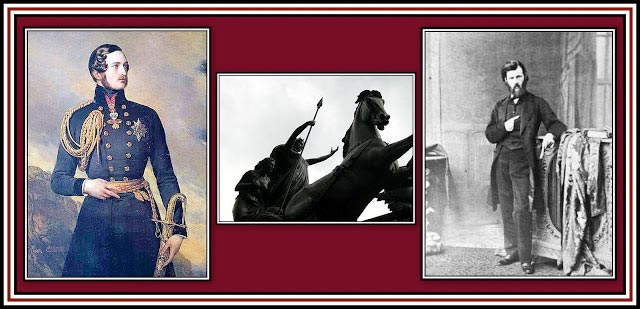 Left, Prince Albert; Right, Thomas Thornycroft
Left, Prince Albert; Right, Thomas Thornycroft
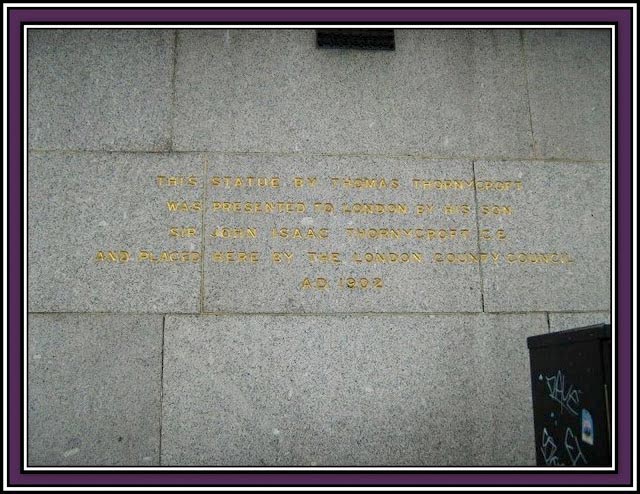 On one side of the base of the statue are written the words:
On one side of the base of the statue are written the words:
This statue by Thomas Thornycroft was presented to London by his son Sir John Isaac Thornycroft and placed here by the London County Council A.D. 1902
The statue was completed in 1905 and stands at the north-east corner of Westminster Bridge with Big Ben and the Houses of Parliament across from it. The following lines are inscribed on it and refer to the British Empire:
Regions Caesar never knew
Their posterity shall sway.
This is somewhat ironic since Boadicea rebelled against the authority and tyranny of Imperial Rome, but now finds herself memorialized and identified with the head of the British Empire and with her statue placed in a prominent setting in the city that her forces once destroyed.
In 1978, Thames Television made a television series for Independent Television in Britain based on the life of Boadicea entitled Warrior Queen. Sian Phillips played the title role. She had previously played Livia, the mother of Claudius, in the television series, I Claudius, which was based on the books of Robert Graves – I Claudius and Claudius the god. Ms Phillips has made a number of films and is an accomplished stage actress having received rave reviews for her portrayal of Vera Simpson in the revival of Pal Joey on the London stage in 1980 and later in Calendar Girls.
In 2003, the television film, Boudica, was produced with Alex Kingston playing the Queen, and playing her very well, I thought. Ms Kingston had been seen previously in The Fortunes and Misfortunes of Moll Flanders and ER and later in Doctor Who, where she played River Song
.
 Alex Kingston – The Warrior Queen
Alex Kingston – The Warrior Queen
—-—oooOOOooo——
After the tourist number had begun to dwindle, I noticed the food stall beside the memorial and saw a young server finishing her work before closing-up for the night. She was an attractive young woman with a nice smile and with long dark hair swept into a pleat behind her. She had a certain voluptuous quality that could not be hidden by her work garment.
We began talking and I discovered that she was Brazilian and came from Rio de Janeiro. She said that she was a Cariocas, which is what the people born in Rio de Janeiro are called in Brazil. I told her that there was a dance apparently derived from the area that was featured in the film, Flying Down to Rio, which was the first film that teamed Ginger Rogers with Fred Astaire. She smiled at this. I also told her that I was a Cockney and explained what that meant. She laughed and said that we obviously have much in common since we were both proud of where we were born. She said that she had been working on the stall for about a year while also attending college. A friend had spoken to the owner and she got the job when the previous worker left. We talked about her life in Brazil and her life in London. She seemed relatively happy although she was tired of being asked for directions to various London sites by the multitudes that stopped by her stall. We laughed and our conversation turned to talk of:
Copacabana, Ipanema, Orpheu Negro, Samba, the Bossa Nova
& Antonio Carlos Jobim and his music (Desafinado sung by Joao Gilberto and by Astrud Gilberto)
as well as Carnival in Rio!
and laughed when I told her that I knew some of the words of Mas Que Nada.
She began to sing the song and I joined in where I could. At the end, we both felt a certain sadness; her for her home and me for the time when I first heard that song.
As we spoke, I could not help but wonder if this was how Boadicea had once looked before the Romans had treated her so shabbily. The young lady stood erect with wide open eyes and maintained a certain regal quality despite her surroundings. I pointed to Boadicea and asked her if she knew who she was. She smiled and said that she had not, but had listened to what I had told the Italians earlier. She said that she found story interesting and that she would now be certain to tell her customers the story of The Warrior Queen in future.
Several days later I was to leave to return home. I went to the statue and said au revoir to The Warrior Queen and to the young Brazilian girl. I said that I would look for her during next visit. She smiled and waved as I turned to go.
——oooOOOooo——
Mrs.Connie Marcum Wong has very kindly sent me a photograph of the statuette of The Warrior Queen that you bought some time ago during a trip to London (see her letter below).
I would like to thank Mrs. Wong for her thoughtfulness and kindness in agreeing to allow her photograph to appear here.
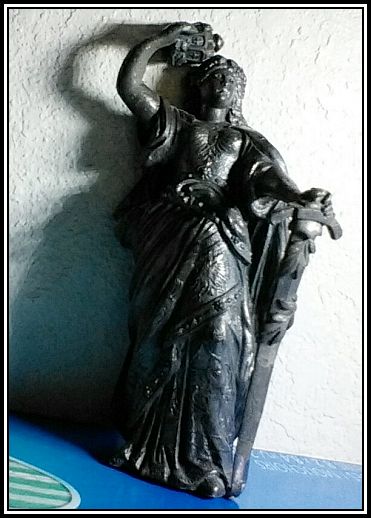 Boadicea, The Warrior Queen
Boadicea, The Warrior Queen
——oooOOOooo——
Click here to go to THE TELESCOPE MAN
at the foot of the statue of The Warrior Queen
——oooOOOooo——
Click here to go to NURSE EDITH CAVELL – WHEN PATRIOTISM IS NOT ENOUGH
——oooOOOooo——
Click here to return to CARVE HER NAME WITH PRIDE Home Page
——oooOOOooo——
Click here to return to the TABLE OF CONTENTS
——oooOOOooo——

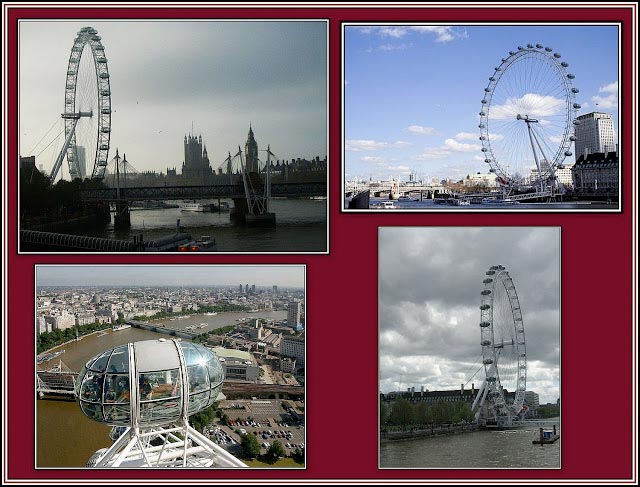
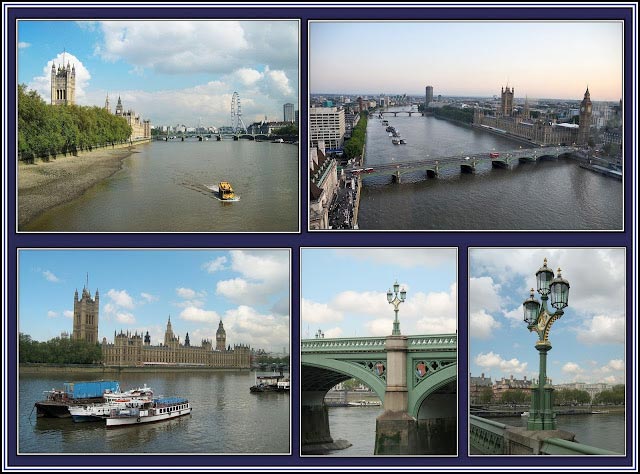
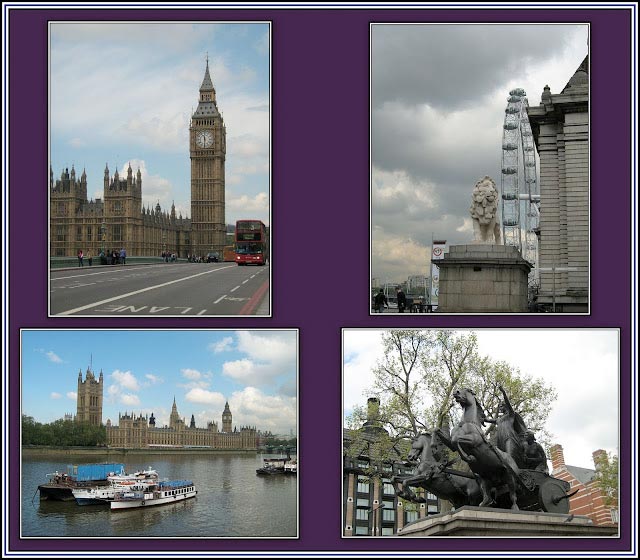
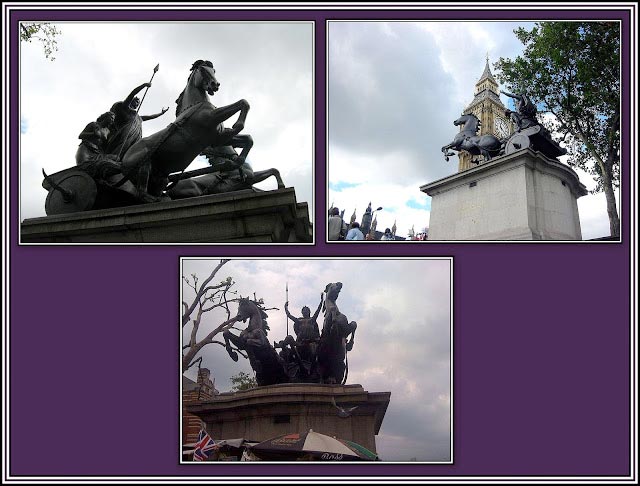
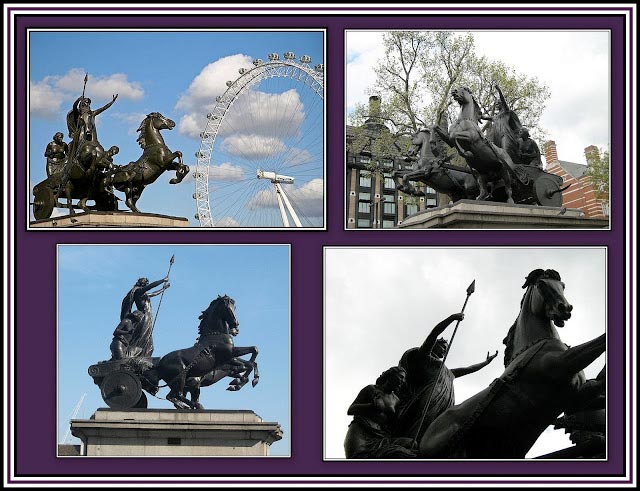


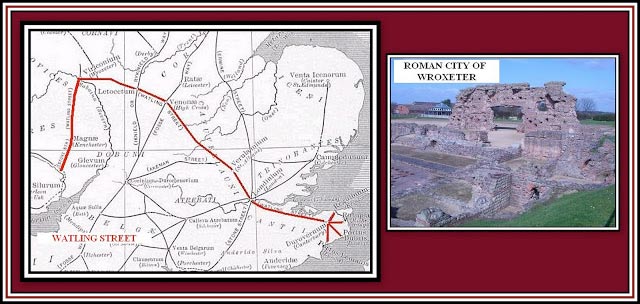
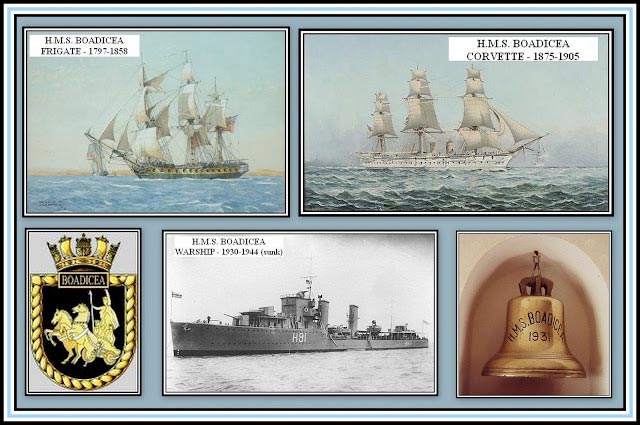


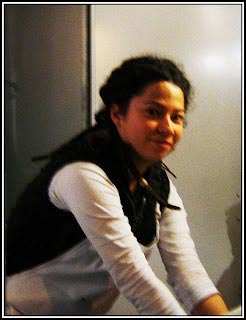
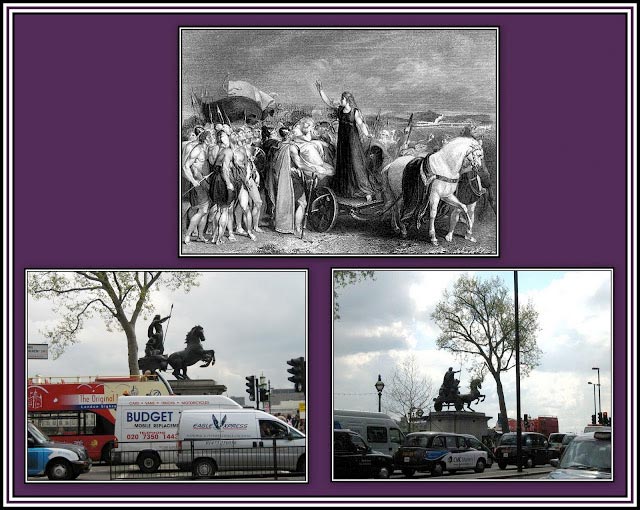
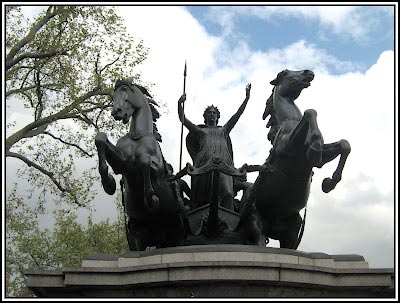
Thank you so much for the story of Queen Boadicea. I have only been to London a few times in my life but I also go to say hello to her when I am there.
She is one of my heroes. I think a person’s heroes say something of their mettle.
Katerina de Medici is another warrior women I hold in esteem so your Italian acquaintances were an added extra.
Thank you very much for taking the time to write. I am glad that you appreciate The Great Queen. There was, at one time, a man who stood at the foot of the statue with a telescope. He would charge, I believe, a penny (old money) to look through it and see the sites. I will be adding a tale about this ‘lost person’ in the section by Mr. Dave Hill. I hope you will return in the future to read it. Again, thanks for writing. It is most appreciated. Charles
Read your comments on Boudicca and share your enthusiasm. I first learnt about Boudicca in the early stages of primary school during world war 2,which captured my imagination and remained with me to this day. The statue of Boudicca is one of the most iconic together with the Royal Artillery monument near Hyde Park in London. I do wish the kiosk could move elsewhere though.
I appreciate you sharing the history of Queen Boudica. I first learned of her bravery in battle and the reasons behind her rebellion against the Romans in 2007. I had visited London much earlier in 1969 and thought the stature was beautiful but knew nothing of its history until a good friend I was visiting who lives in Essex told me about her in 2007. I bought a lovely small pewter statue of Queen Boudica holding her crown near her head with one hand and a sword by her side with the other hand. She is dressed in a lovely gown of the times and the detail on this little 4 inch tall statue is glorious. I have hunted online and elsewhere but have no clue how old it is. The detail of her long hair and facial features is magnificent. I only paid $20.00 American for her but feel she is worth much more. She is to me anyway. I believe she used to belong to someone who passed on and their things were being sold off. I bought her in Chelmsford at a little shop. I am happy that you are sharing Queen Boudica’s legend with the public. The London Eye really takes away from her stunning statue and is a shame that is all the tourists seek to have their picture taken with. I visited London in 90’s with my Aunt and we had someone take a photo of us near the statue before the London Eye was erected and I treasure that photo. My aunt died in 2011. Thank you so much for the time I know you have spent on this site. It has truly been appreciated by me and I am sure many others. I shall one day have to write a poem about Queen Boudica. Aloha, Connie Marcum Wong
1999 on our first day in London we stopped to view Boadicea with her daughters and chariot and were surprised that few looked her way or even saw her above the s0uvenir stall. Yet she can be seen from Westminster Bridge and the south bank. How did a West Aussie know of her? Our reading books and my history studies had included her story. I’m proud to be of Norfolk descent plus to have had strong women in my life.
I really enjoyed your article and the photos. I have always been fascinated by Boadicea since reading “Ravens of Avalon”. As part of my secondary school Latin studies, I was at the same time learning a “sanitized” and far from objective version of Roman history. I was so glad to have discovered the works of Marion Zimmer Bradley which provided a different perspective. Boadicea deserves a far greater place in history.
I imagine politicians scurrying around the Halls of Westminster Palace lower their eyes , blinded by the reverence of this awesome statue depicting bravery in the face of oppressive rule by a foreign power.
This magnificent statue of Queen Boadicea and her daughters in their chariot with scythed wheels pulled by unbridled horses was cast in bronze by JW Singer
of Russell Street , Frome, Somerset , but six miles from where I live in Warminster, Wiltshire. I first saw the statue when at Laleham Abbey , a small Convent School not far from Chertsey Bridge. Our uniforms were supplied by Gorringes in London and it was my family’s delight to visit the statue and take in the omnipresence of this redoubtable Queen.
Thank you so much for this fantastic article….Boadicea Rules UK and God help anybody who dares to take down this statue. It’s bad enough having a Kiosk
selling tacky souveneirs from The Far East against the plinth. Who ever allowed that has all their taste in their mouth!
Thank you very much for sharing your thoughts. It is most appreciated. I am very happy to know that there is someone else who still appreciates The Great Warrior Queen. Charles
Thank you for the insightful article relating to The Warrior Queen and a colorful historical journey! I live in the United States and years ago purchased an old bronze statue at an estate sale that I was told was originally from England. The treasure (due to her likeness) has introduced me to the history of Queen Boudicca and all who hold her dear.
Suzi: Thank you so much for visiting my website – it is good to find people who appreciate the history of The Great Warrior Queen. With kind regards. Charles